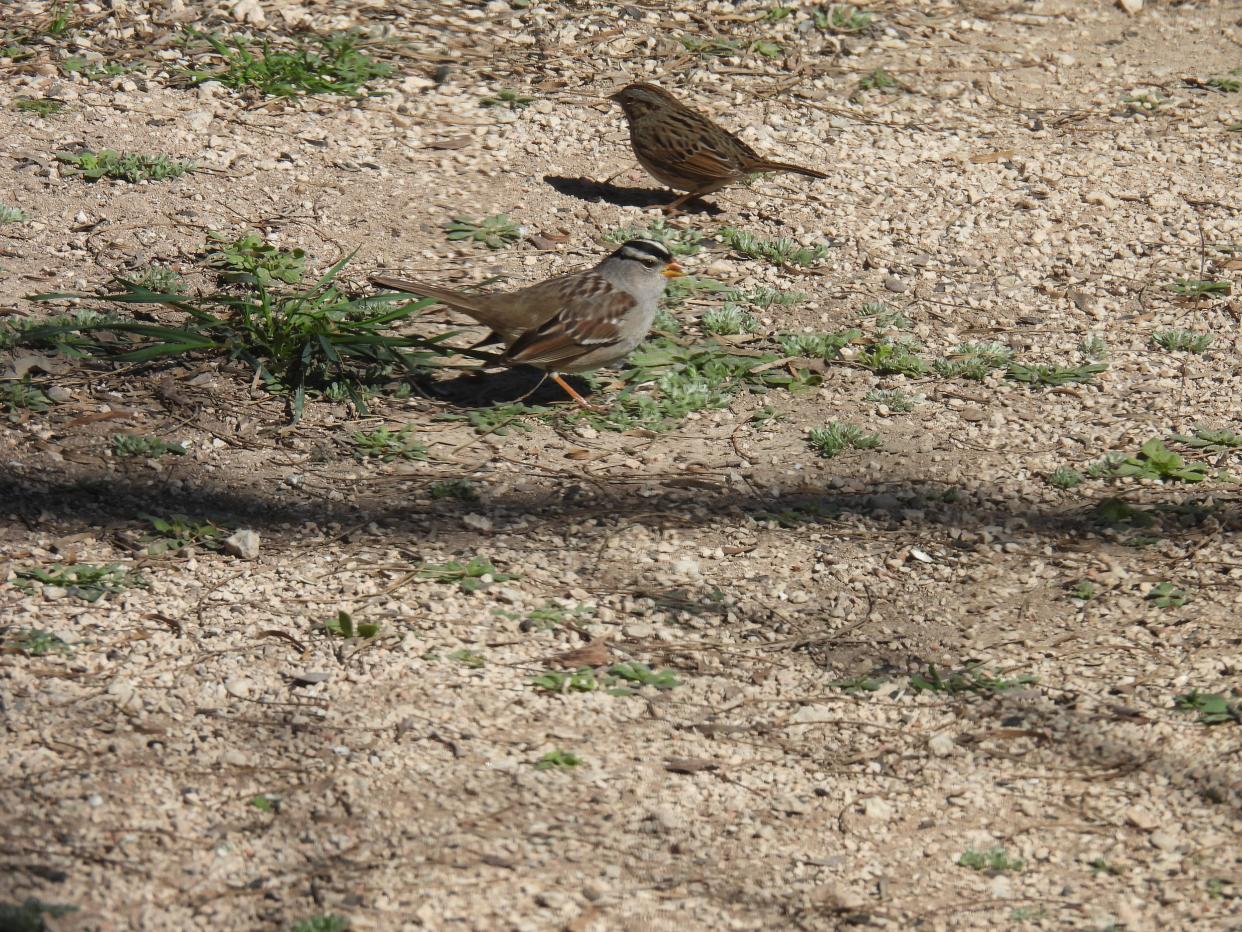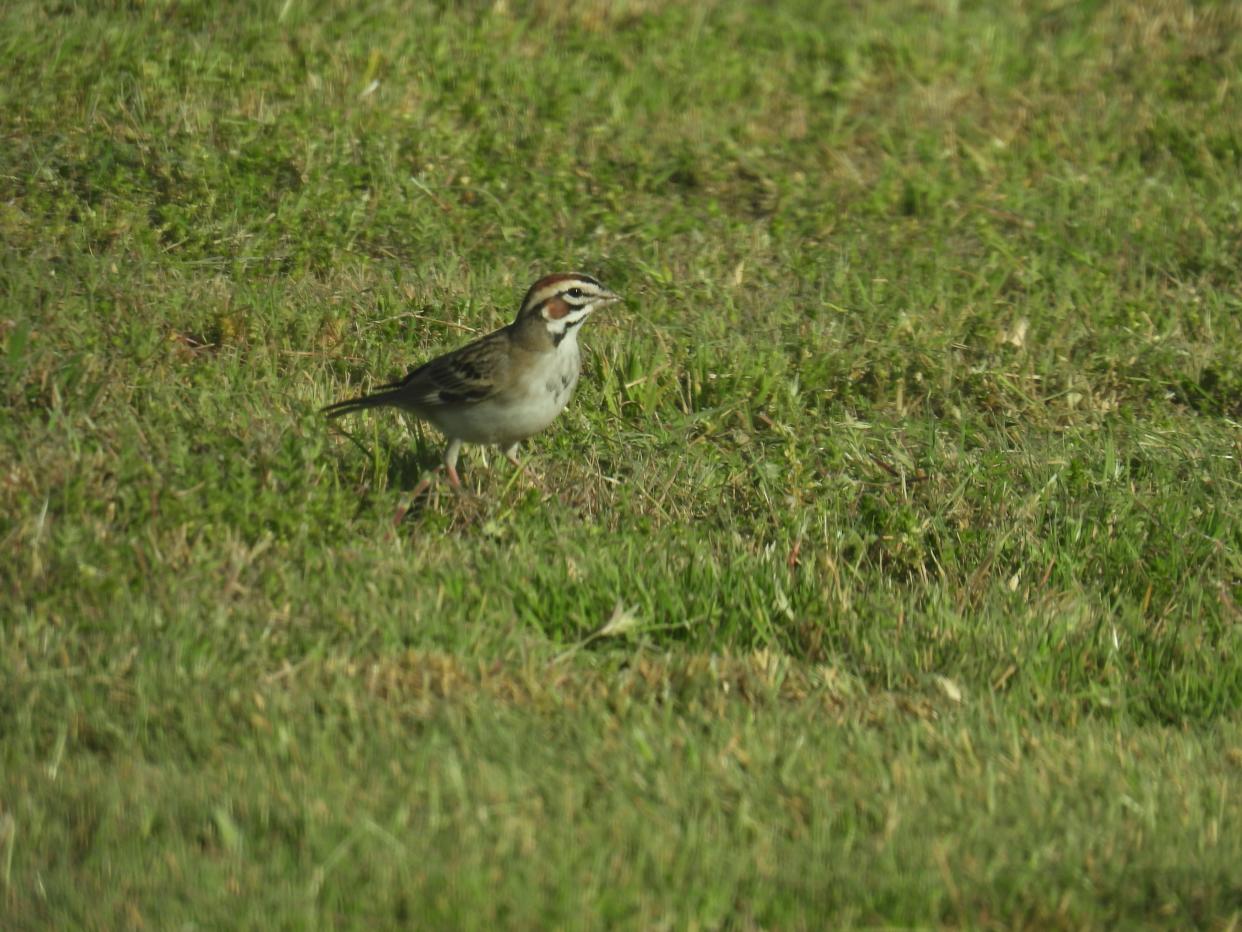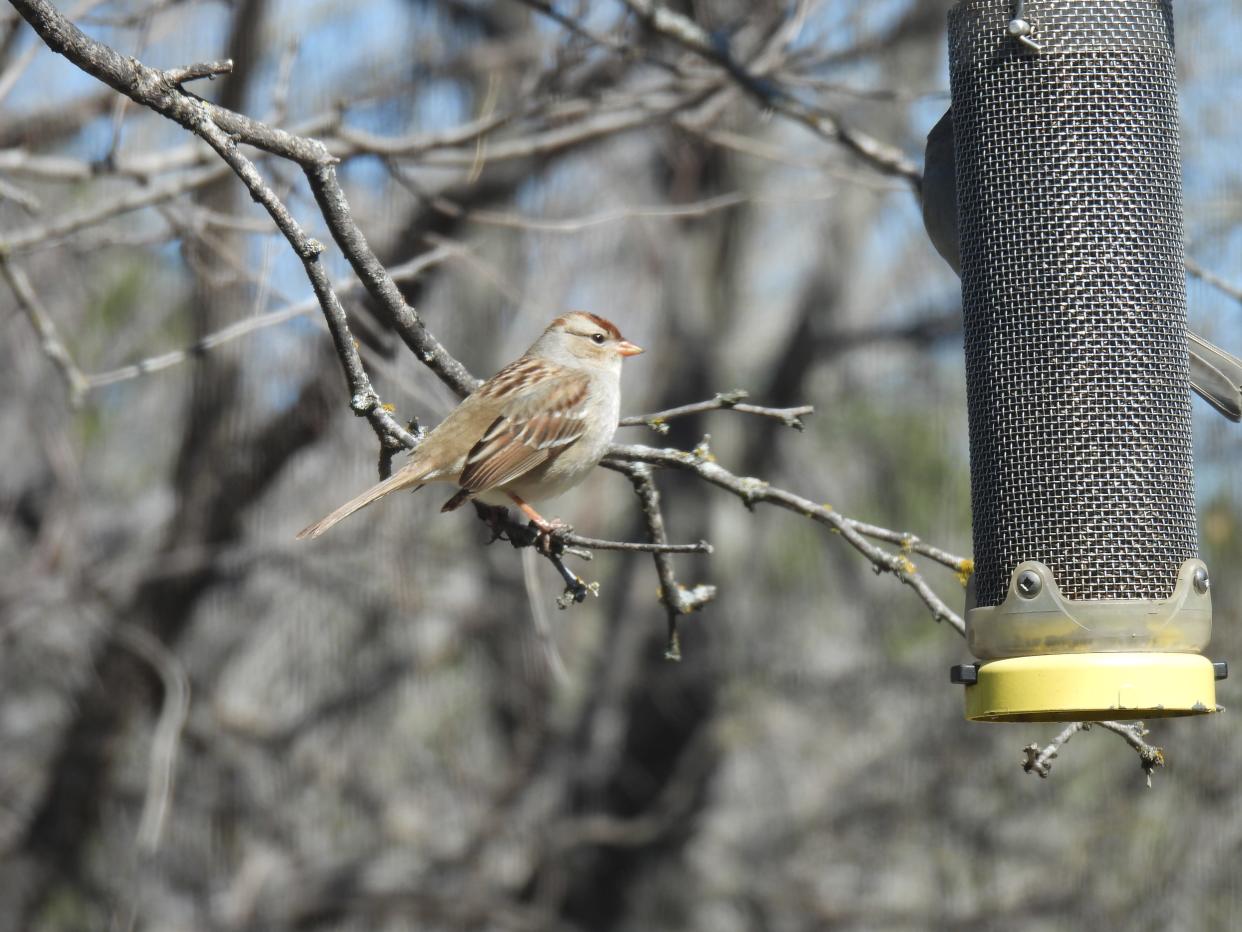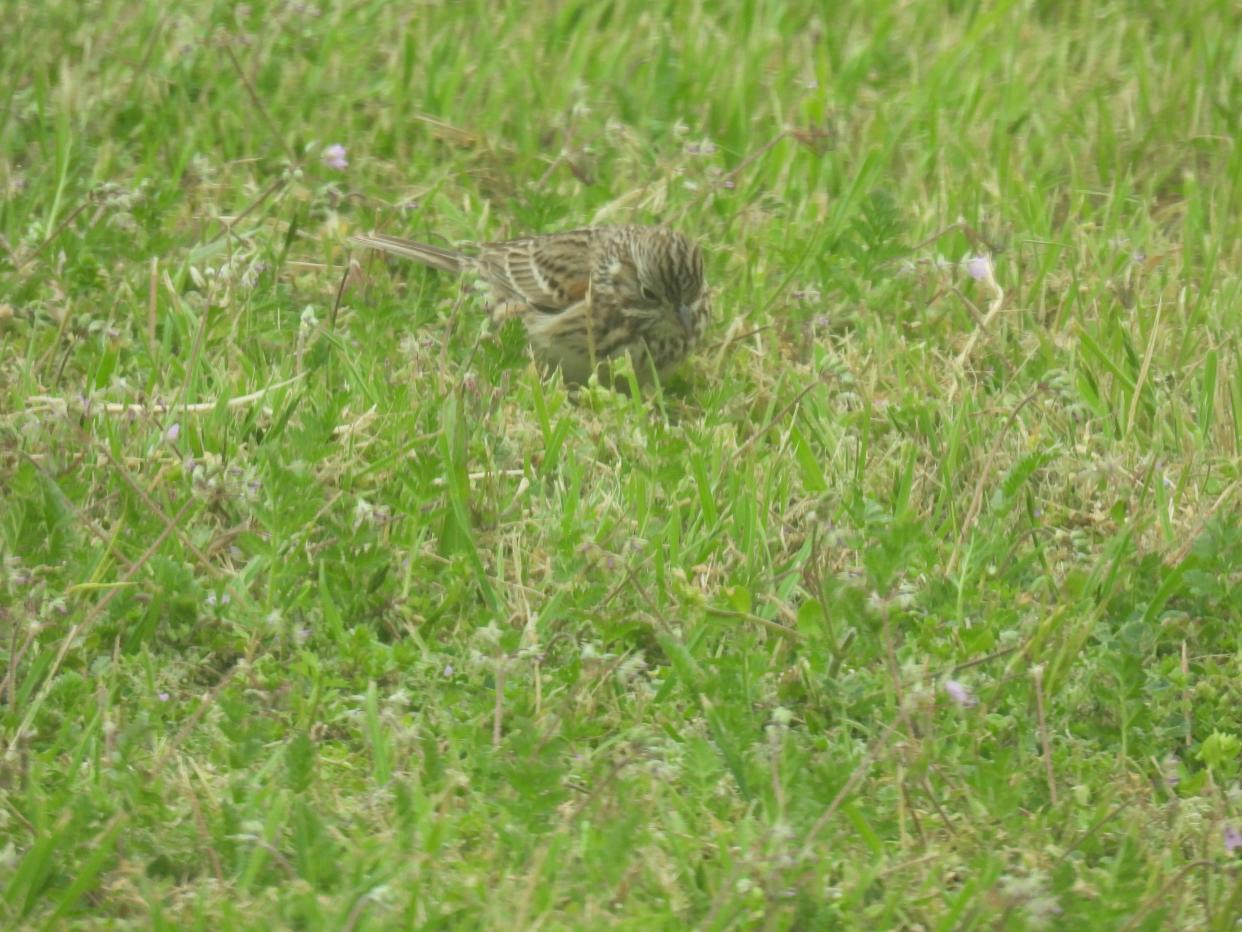Goetze: Take a closer look at local LBBs and develop an appreciation for them
I am guilty of a statement concerning a group of birds of our area. The statement is that these small birds are sometimes overlooked or ignored by observers (myself included) searching diligently for larger, more colorful or more melodious avians.
Take a picture, why don't you?
Just as birders may refer to some small shorebirds as “Peeps," my initial introduction to the sparrows was that they were LBBs: short for Little Brown Birds!
I admit to being challenged concerning spot-on species identifications of sparrows in the field but have found the task a bit easier after acquiring a camera that can capture detailed photos of these little birds.

I spy sparrows
The saying, “The Devil is in the details,” applies to sparrows. Even though most sparrows are a mixture of brown, black and white (with a few yellow, green, and other colors thrown in here-and-there for good measure), there are differences in the sparrows’ patterns of basic browns, blacks and whites that — although slight — can be used to distinguish between the birds.
Small differences between the shape, color and size of eyebrows; malar stipes — lines extending from the base of the bill down the cheeks; eye-ring presence or absence; wing bars; tail shapes, lengths and edges; coverlet feather colors and patterns; and even bill color and size make the difference when attempting species identifications of these LBBs.
A sociable group
Another habit of sparrows which often frustrates observers is that sparrows, as a group, are gregarious birds and are usually found in mixed flocks as they forage for seeds and insects.
Different species also roost and nest in close association with each other and, thus, seem to almost intentionally violate another old saying, “Birds of a feather flock together,” as they forage, fly and even socialize in mixed flocks and groups!
Why get to know these LBBs?
However, getting to know a few of the more common resident and migrant sparrows from Northcentral Texas and Southwestern Oklahoma increases appreciation, understanding and amazement of the tremendous adaptive radiation of sparrows to become this large group of LBBs.
Different species are found in our area during different seasons and many are only transients or winter residents who, depending upon species, will fly as far as the Arctic Circle during spring and summer to reach their breeding grounds in the taiga and tundra habitats of the north.
There's an app for that
Another tool I’ve used to help discover local birds is the Merlin app from the Cornell Lab of Ornithology. Users can submit a photo to the app, and an expert will attempt to identify and/or confirm a bird sighting.
Another useful feature is the app’s sound ID function. Bird calls are detected, recorded and identified to species, and users are shown photos of the birds. Merlin is fairly accurate, but you should still exercise caution with some of its identifications.
For instance, Merlin tells me that it hears the common loon near my home (which is not completely impossible), but what the app is actually hearing is the “song” of a squeaky pump jack from a nearby oilfield!
Merlin enables me to narrow down possibilities and obtain better IDs of sparrows and other birds. A few of the native sparrows that Merlin has detected include the chipping sparrow, lark sparrow, Lincoln’s sparrow, vesper sparrow and white-crowned sparrow.
Therefore, let us discuss these sparrows which are either permanent residents within our region or are winter residents and/or migrant species.
This sparrow wears a crown
The white-crowned sparrow is perhaps one of the more easily identified species and really has a distinctive, white-striped head crown with white stripes above and behind its eyes. Its bill is orange to pink colored, and the uniform buffy gray belly is unmarked — lacking stripes, streaks and/or spots.
White-crowned sparrows are winter residents of our region; therefore, they won’t be with us for too long in the spring.
This LBB has a moustache
The lark sparrow is a permanent area resident. This LBB has a bold head pattern which includes a brown crown, black, triangular moustache, dark eyeline and other features giving its head a rather harlequin-like — triangular — pattern.
Other identifying characteristics include a white breast with a dark, central spot and a long, white-edged tail. Lark sparrows are frequent visitors to lawns and short grass areas and tend to forage separately from other sparrows.

This sparrow's tail is just so
Chipping sparrows winter and reproduce in open woodlands, fields, farms, towns and cities in parts of our area. This sparrow was once a resident of pine woodlands and edge habitats but has adapted well to changing landscapes.
Adult chipping sparrows may be recognized by their chestnut-colored crowns, dark eyelines and white eyebrows, and gray neck napes and rumps. Also, their tails are long and have notched ends.

This sparrow requires sharp eyes for an ID
Vesper sparrows require sharp eyes and acute observation in order to descry their distinguishing characteristics. These winter residents of meadow, field and grassland areas have white-edged tails and dark cheeks with white borders along their bottom and rear edges.
Vesper sparrows also have unbroken white eye-rings and small chestnut colored patches on their shoulders’ lesser coverlet feathers. Narrow brown to tan streaks occur on the upperparts, sides and the breast.

An LBB with a proper name
Lincoln sparrows winter in thickets, weedy fields and brushy areas in our southern and eastern counties.
Secretive and inconspicuous, Lincoln sparrows have broad, gray eyebrows and buffy eye-rings and mustaches/malars, whitish chins and finely streaked necks and breasts. Also, the Lincoln sparrow’s overall color is grayer than the aforementioned sparrow species.
See them before they're gone
Chipping and lark sparrows remain in parts of our region throughout the year, but, with the exception of a few strays, Lincoln, vesper and white-crowned sparrows are exiting our area for a while.
These LBB’s may be a bit more challenging to identify, but, as another old saying goes, “The good things in life rarely come easily." So go have a look before they are gone, and you’ll definitely feel rewarded!

Jim Goetze is a retired professor of biology and former chairperson of the Natural Sciences Department of Laredo College with an avid interest in all aspects of the natural world. He can be contacted at gonorthtxnature@gmail.com.
This article originally appeared on Wichita Falls Times Record News: Goetze: Sparrows, LBBs
